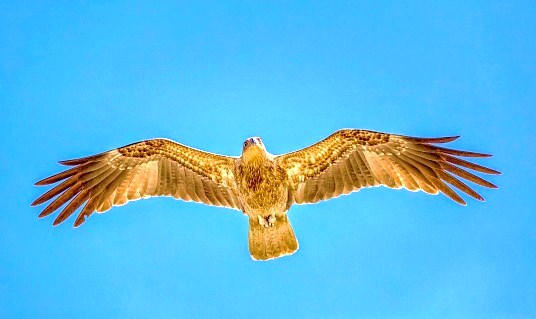The whistling kite is a medium-sized raptor (bird of prey) with a shaggy appearance. It has a light brown head and underparts, with pale streaks, and dark sandy-brown wings with paler undersides. The underwings have a characteristic pale 'M' shape when open. The head and body are relatively narrow and the tail is rounded. The wings are long and well-rounded, with a wingspan of 120 cm to 145 cm. The sexes are similar, but the females are larger. Young birds are slightly darker above, with paler streaking on head and underbody. They are often seen near water or around farms, soaring in a lazy circling flight pattern. |

